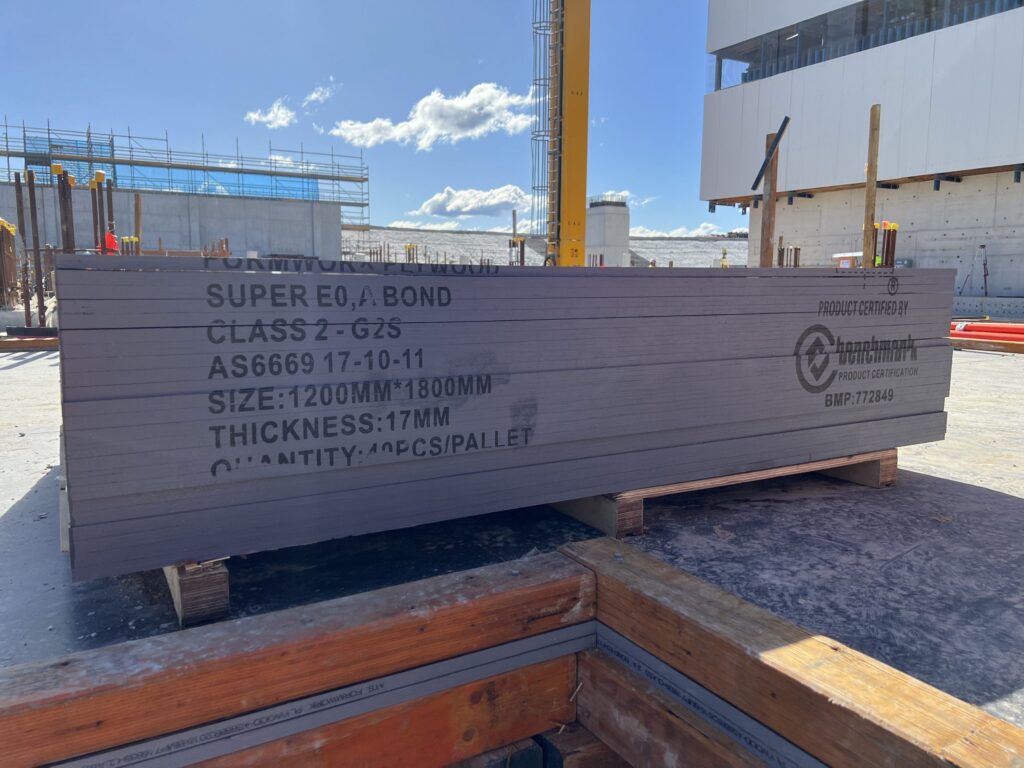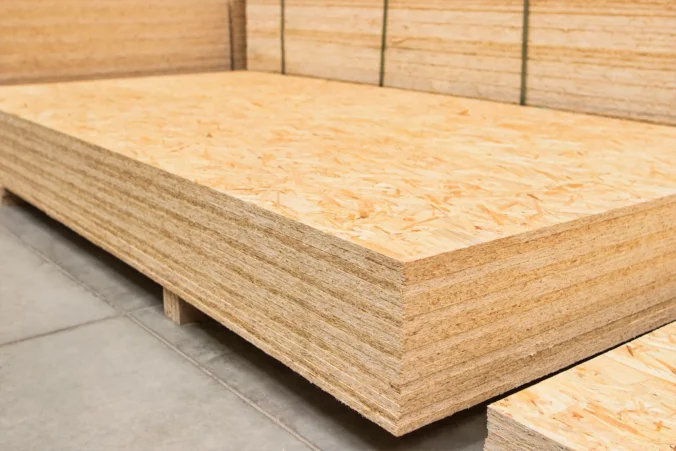When it comes to construction projects in Australia, choosing the right materials is crucial for achieving durability, safety, and efficiency. One such essential material is formply, a specific type of plywood primarily used in formwork applications. This guide will delve into the various aspects of formply, enabling you to make an informed decision when selecting the right plywood for your construction needs.
Understanding Formply: An Overview
Formply, short for formwork plywood, is a durable and high-quality plywood product designed specifically for concrete forming applications. It is engineered to withstand the rigors of construction while providing a smooth surface for concrete placement. Understanding formply involves exploring its definition, uses, and significance in the construction sector.
Formply Australia, there are several types of formply available in the market of Australia, each suited to different construction needs. Understanding the characteristics of these types can aid you in making a choice fit for your specific application.
Definition and Uses of Formply
Formply is a type of plywood made from layers of wood veneer glued together under heat and pressure. It is commonly used for creating formwork — temporary or permanent molds used to hold concrete in place while it cures. Typical applications of formply include:
- Concrete slabs
- Walls and columns
- Bridges and tunnels
- Roads and highways
Its specific composition allows it to resist wear and tear, making it a favored choice among builders and contractors across Australia. Additionally, formply is often treated with a phenolic resin that enhances its waterproofing properties, allowing it to be used in environments where moisture exposure is a concern. This treatment not only extends the lifespan of the plywood but also reduces the likelihood of warping or delamination, which can be critical in maintaining the integrity of the formwork throughout the curing process.

Importance of Formply in Construction
The use of formply in construction is of paramount importance. Without the right formwork, concrete structures could suffer from compromises in strength, dimensional accuracy, and surface finish. Formply contributes significantly by:
- Providing a solid foundation for formwork systems
- Facilitating the construction of complex shapes and designs
- Ensuring surface smoothness and reducing finishing time
Thus, understanding the role of formply is essential for construction professionals aiming for quality results. Moreover, the versatility of formply allows it to be customized for specific projects, with various thicknesses and sizes available to meet the unique demands of different construction scenarios. This adaptability not only enhances the efficiency of the building process but also ensures that the final concrete product meets the desired specifications and aesthetic standards. Furthermore, the eco-friendly sourcing of the wood used in formply production aligns with the growing emphasis on sustainable building practices, making it a responsible choice for modern construction projects. Find more about sustainable at https://www.sustain.ucla.edu/what-is-sustainability/
Factors to Consider When Choosing Formply
Selecting the right formply for your project involves several considerations. It can greatly impact the efficiency and quality of the construction process. Below are the critical factors to keep in mind.
Material Quality and Durability
The quality of the material used in manufacturing formply directly affects its performance. High-quality formply is typically made from well-graded veneers that offer strength and resistance to warping and splitting. Look for products that boast:
- High durability and load-bearing capabilities
- Resistance to moisture ingress
- Long service life, reducing the need for frequent replacements
Investing in quality materials will ultimately lead to a more robust structure and cost savings over time. Furthermore, the sourcing of these materials can also play a role in sustainability. Opting for formply made from responsibly sourced timber not only helps in reducing the environmental impact but can also enhance the reputation of your project in the eyes of clients and stakeholders who prioritize eco-friendly practices.
Size and Thickness
The dimensions of formply also play a vital role in its suitability for specific projects. The most common sizes available in Australia are 2400mm x 1200mm sheets, but the thickness may vary. When selecting size and thickness, consider:
- The design specification of your project
- Load requirements and structural integrity
- The complexity of the formwork system being used
Choosing the appropriate thickness can help ensure that the formply can withstand the concrete’s weight without deforming. Additionally, it’s important to evaluate the ease of handling and installation associated with different sizes. Larger sheets may reduce the number of joints and seams, leading to a smoother finish, but they can also be more cumbersome to transport and position on-site. Balancing these factors can lead to a more efficient workflow during construction.
Weather Resistance
Australia’s varied climate conditions can pose challenges for construction materials, making weather resistance a crucial factor in the selection process. Quality formply is treated to enhance its resistance to:
- Rain and humidity
- Extreme temperatures
- UV radiation
This treatment not only extends the life of the formply but also reduces the risk of premature failure during usage. In addition to these protective measures, consider the potential for exposure to chemicals or other harsh substances on the construction site. Some formply products come with additional coatings that provide extra protection against such elements, ensuring that the material maintains its integrity throughout the project duration. This foresight can be invaluable, particularly in industrial or commercial settings where the stakes are higher. Click here to find more about chemicals.
Different Types of Formply in Australia
Hardwood Formply
Hardwood formply is made from hardwood species, making it a strong and durable choice for heavy formwork applications. Its advantages include:
- Exceptional strength and stability
- A beautiful surface finish ideal for aesthetic applications
- Longer lifespan compared to softwood alternatives
For large-scale projects requiring sturdy support, hardwood formply is often the preferred choice. It is particularly favored in high-rise construction and infrastructure projects, where the integrity of the formwork is paramount. Additionally, the natural resistance of hardwood to wear and tear makes it suitable for repeated use, which can significantly reduce costs over time. Builders often appreciate the ease of finishing that hardwood provides, allowing for a polished look in exposed concrete applications.
Softwood Formply
Softwood formply, typically made from pine species, offers a cost-effective alternative. While it might not match the strength of hardwood, it provides several benefits:
- Lightweight nature that facilitates easier handling
- Lower cost, making it ideal for smaller projects
- Good performance in moderate load applications
Many builders opt for softwood formply when working with less demanding structural requirements. Its affordability makes it a popular choice for residential construction and DIY projects, where budget constraints are often a significant consideration. Moreover, the ease of cutting and shaping softwood allows for quick adjustments on-site, enhancing workflow efficiency. Despite its lighter weight, softwood formply can still deliver satisfactory performance in many applications, especially those that do not require the extreme durability of hardwood.

Composite Formply
Composite formply is a blend of hardwood and softwood, designed to harness the strengths of both types. Some benefits include:
- Enhanced durability through engineered materials
- Better moisture resistance
- Variety in finish to suit different project aesthetics
This versatility makes composite formply an appealing option for a diverse range of construction applications. Its engineered nature allows for customization in thickness and density, catering to specific project requirements. Additionally, composite formply often features a protective coating that enhances its resistance to moisture and chemicals, making it suitable for use in environments where exposure to the elements is a concern. This adaptability has led to its growing popularity in both commercial and residential sectors, where builders seek materials that can perform reliably across various conditions.
The Manufacturing Process of Formply
Understanding the manufacturing process behind formply can shed light on why it performs so well in construction. The journey from raw materials to finished product involves several critical steps.
Raw Material Selection
The first step in manufacturing formply involves selecting high-quality raw materials. The wood is sourced from sustainable forests and carefully graded to ensure:
- Consistency in thickness and strength
- Minimal defects and blemishes
- Conformance with industry standards
This emphasis on quality raw materials forms the foundation for durable, reliable formply. Additionally, the choice of wood species can significantly influence the performance characteristics of the final product. For instance, hardwoods like birch or eucalyptus are often favored for their superior strength and moisture resistance, making them ideal for high-demand construction applications. The sustainable sourcing of these materials not only supports environmental stewardship but also ensures that manufacturers can maintain a steady supply chain, which is crucial for meeting market demands.
Adhesive Application and Pressing
Once the veneers are selected, they undergo adhesive application followed by pressing. High-performance adhesives are used, and the pressing process involves:
- Layering the veneers in a specific orientation
- Applying pressure and heat to cure the adhesive
- Ensuring strong bond formation between layers
This ensures that the resulting product can withstand substantial loads without delaminating during use. The choice of adhesive is also critical; modern formulations are designed to provide excellent water resistance and durability, which is essential for formply used in outdoor or high-moisture environments. Furthermore, the pressing process is meticulously controlled to optimize the density and structural integrity of the formply, thereby enhancing its overall performance in various construction scenarios.
Finishing and Quality Control
The final stages of manufacturing include finishing processes such as sanding and sealing, which enhance the surface quality and durability of formply. Quality control measures are also implemented to ensure every sheet meets strict performance standards. This includes:
- Dimensional checks for conformity
- Testing for adhesive strength
- Visual inspections for defects
By adhering to such rigorous quality control standards, manufacturers ensure that the formply available on the market meets the needs of construction professionals across Australia. Moreover, the finishing process not only improves aesthetics but also provides an additional layer of protection against wear and tear, further extending the lifespan of the product. Manufacturers often employ advanced technologies, such as automated inspection systems, to enhance the accuracy and efficiency of quality control, ensuring that only the highest quality formply reaches the end-users.
In conclusion, selecting the right formply involves understanding its definition, considering factors such as material quality, size, and weather resistance, exploring the types available, and recognizing the manufacturing process involved. By following the guidelines in this article, you can ensure you choose the most suitable formply for your construction projects, paving the way for success.
Other resources: How to Buy Formply for Your Next Construction Project

Leave a Reply